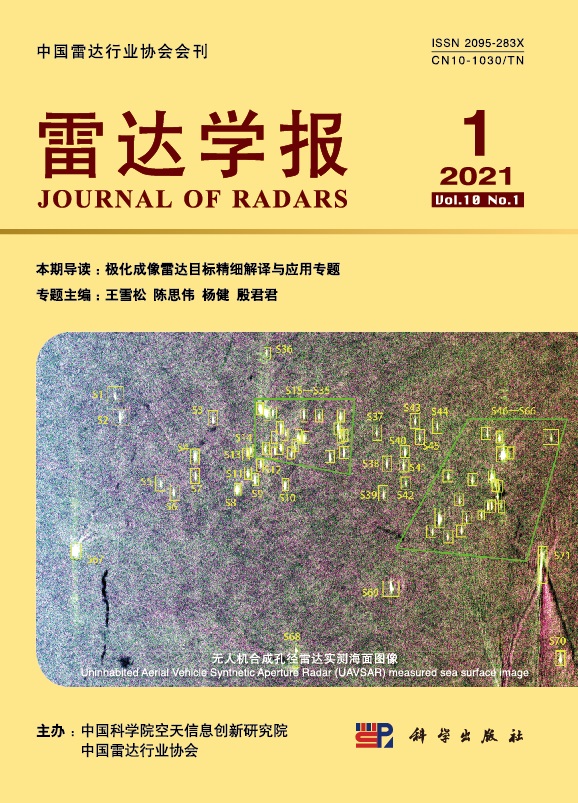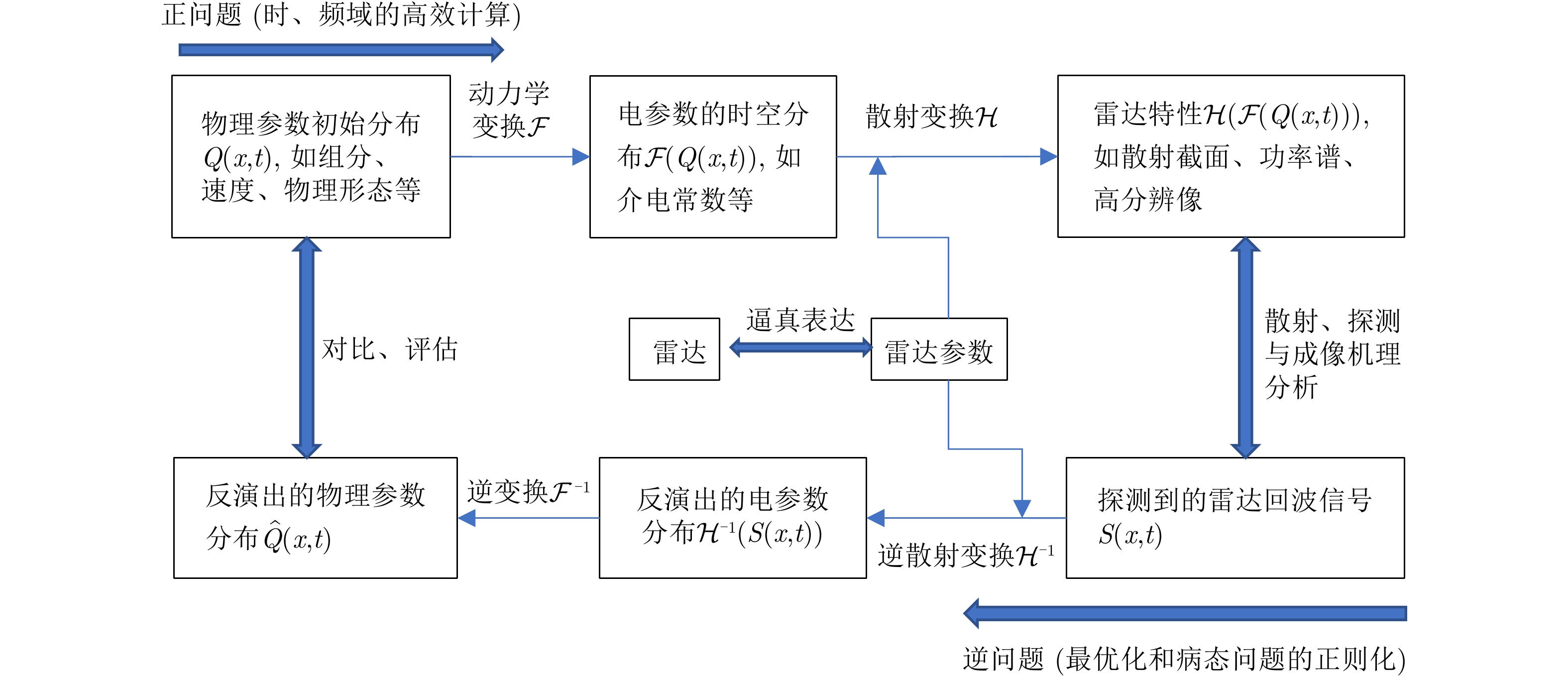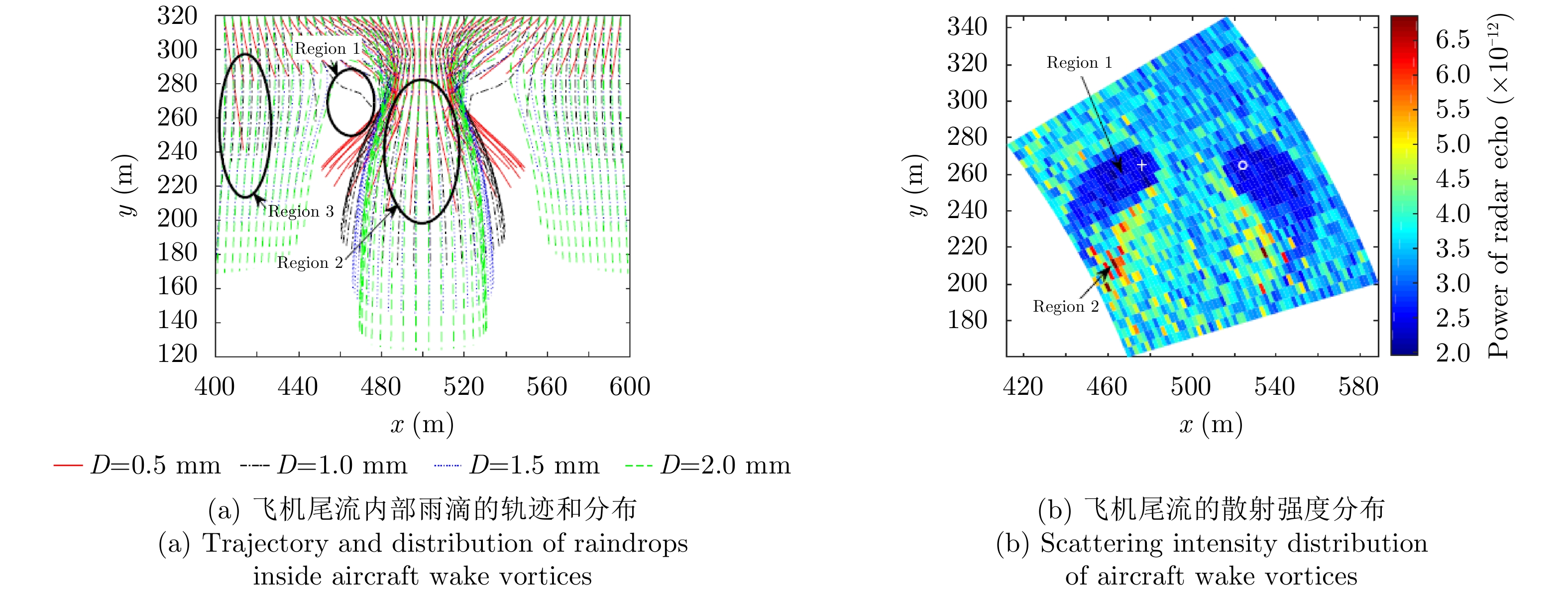| [1] |
SKOLNIK M I. Introduction to Radar Systems[M]. Boston: McGraw Hill, 2001.
|
| [2] |
GERZ T, HOLZÄPFEL F, and DARRACQ D. Commercial aircraft wake vortices[J]. Progress in Aerospace Sciences, 2002, 38(3): 181–208. doi: 10.1016/S0376-0421(02)00004-0 |
| [3] |
陈静. 雷达箔条干扰原理[M]. 北京: 国防工业出版社, 2007.
CHEN Jing. Principles of Radar Chaff Jamming[M]. Beijing: National Defense Industry Press, 2007.
|
| [4] |
Food and Agriculture Organization of the United Nations. Appeal for rapid response and anticipatory action in the Greater Horn of Africa[R]. 2020.
|
| [5] |
DOVIAK R J and ZRNIĆ D S. Doppler Radar and Weather Observations[M]. 2nd ed. New York: Dover Publications, 2006.
|
| [6] |
SHARMAN R and LANE T. Aviation Turbulence: Processes, Detection, Prediction[M]. Switzerland: Springer, 2016.
|
| [7] |
STREETER V L and WYLIE E B. Fluid Mechanics[M]. New York: McGraw-Hill, 1979.
|
| [8] |
CHEW W C. Waves and Fields in Inhomogeneous Media[M]. New York: Van Nostrand Reinhold, 1990.
|
| [9] |
BORN M and WOLF E. Principles of Optics[M]. Cambridge: Cambridge University Press, 1999.
|
| [10] |
WANG Wei, LI Jianbing, and NIU Fengliang. A revisit to the validity of born approximation in high frequency scattering problems[J]. Microwave and Optical Technology Letters, 2012, 54(12): 2792–2797. doi: 10.1002/mop.27161 |
| [11] |
LI Jianbing, WANG Xuesong, and WANG Tao. On the validity of born approximation[J]. Progress In Electromagnetics Research, 2010, 107(4): 219–237.
|
| [12] |
LI Jianbing, WANG Xuesong, and WANG Tao. A rigorous criterion to identify the validity of the Born approximation[J]. Chinese Physics B, 2009, 18(8): 3174–3182. doi: 10.1088/1674-1056/18/8/014 |
| [13] |
NIE Zaiping, YAN Su, HE Shiquan, et al. On the basis functions with traveling wave phase factor for efficient analysis of scattering from electrically large targets[J]. Progress in Electromagnetics Research, 2008, 85: 83–114. doi: 10.2528/PIER08081905 |
| [14] |
李健兵. 飞机尾流雷达特征信号研究[M]. 长沙: 国防科技大学出版社, 2015.
LI Jianbing. Study on the Radar Signatures of Aircraft Wake Vortices[M]. Changsha: National University of Defense Technology Press, 2015.
|
| [15] |
CUI Tiejun, CHEW W C, AYDINER A A, et al. Inverse scattering of two-dimensional dielectric objects buried in a lossy earth using the distorted born iterative method[J]. IEEE Transactions on Geoscience and Remote Sensing, 2001, 39(2): 339–346. doi: 10.1109/36.905242 |
| [16] |
LI Jianbing, GAO Hang, LI Yongzhen, et al. Circulation retrieval of simulated wake vortices under rainy condition with a side-looking scanning radar[J]. IEEE Transactions on Aerospace and Electronic Systems, 2018, 54(2): 569–584. doi: 10.1109/TAES.2017.2760799 |
| [17] |
谢鸿杰. 稀薄大气中箔条的雷达干扰特性研究[D]. [硕士论文], 国防科技大学, 2014.
XIE Hongjie. Study on radar jamming characteristics of chaff in rarefied atmosphere[D]. [Master dissertation], National University of Defense Technology, 2014.
|
| [18] |
BRINGI V N and CHANDRASEKAR V. Polarimetric Doppler Weather Radar: Principles and Applications[M]. Cambridge: Cambridge University Press, 2001.
|
| [19] |
ISHIMARU A. Wave Propagation and Scattering in Random Media[M]. New York: Academic Press, 1978.
|
| [20] |
GOUESBET G. Latest achievements in Generalized Lorenz-Mie theories: A commented reference database[J]. Annalen der Physik, 2014, 526(11/12): 461–489.
|
| [21] |
LEINONEN J. High-level interface to T-matrix scattering calculations: Architecture, capabilities and limitations[J]. Optics Express, 2014, 22(2): 1655–1660. doi: 10.1364/OE.22.001655 |
| [22] |
MAUGHAN J B, CHAKRABARTI A, and SORENSEN C M. Rayleigh scattering and the internal coupling parameter for arbitrary particle shapes[J]. Journal of Quantitative Spectroscopy and Radiative Transfer, 2017, 189: 339–343. doi: 10.1016/j.jqsrt.2016.12.004 |
| [23] |
BOWMAN J J, SENIOR T B A, and USLENGHI P L E. Electromagnetic and Acoustic Scattering by Simple Shapes[M]. New York: Hemisphere Publishing Corp, 1987.
|
| [24] |
李金梁. 箔条干扰的特性与雷达抗箔条技术研究[D]. [博士论文], 国防科技大学, 2010.
LI Jinliang. Study on characteristics of chaff jamming and anti-chaff technology for radar[D]. [Ph.D. dissertation], National University of Defense Technology, 2010.
|
| [25] |
盛裴轩, 毛节泰, 李建国, 等. 大气物理学[M]. 北京: 北京大学出版社, 2003.
SHENG Peixuan, MAO Jietai, LI Jianguo, et al. Atmosphere Physics[M]. Beijing: Beijing University Press, 2003.
|
| [26] |
ZHANG Guifu. Weather Radar Polarimetry[M]. New York: CRC Press, 2016.
|
| [27] |
SKOLNIK M I. Radar Handbook[M]. New York: McGraw-Hill, 2008.
|
| [28] |
SULLIVAN R J. Radar Foundations for Imaging and Advanced Concepts[M]. Raleigh: SciTech Pub, 2004.
|
| [29] |
MCMANAMON P. Field Guide to Lidar[M]. Washington: SPIE Press, 2015.
|
| [30] |
BANAKH V and SMALIKHO I. Coherent Doppler Wind Lidars in a Turbulent Atmosphere[M]. Boston: Artech House, 2013.
|
| [31] |
MCAULAY A D. Lidar Protects from Chemical/Biological Weapons[M]. CAULAY A D. Military Laser Technology for Defense: Technology for Revolutionizing 21st Century Warfare. Hoboken, USA: John Wiley & Sons, Inc., 2011: 251–264.
|
| [32] |
BRENNEN C E. Fundamentals of Multiphase Flow[M]. Cambridge: Cambridge University Press, 2009.
|
| [33] |
LIU Zhengliang, BARLOW J F, CHAN P W, et al. A review of progress and applications of pulsed doppler Wind LiDARs[J]. Remote Sensing, 2019, 11(21): 2522. doi: 10.3390/rs11212522 |
| [34] |
GAO Jidong, XUE M, LEE S Y, et al. A three-dimensional variational single-Doppler velocity retrieval method with simple conservation equation constraint[J]. Meteorology and Atmospheric Physics, 2006, 94(1/4): 11–26.
|
| [35] |
GAO Jidong, XUE Ming, SHAPIRO A, et al. A variational method for the analysis of three-dimensional wind fields from two doppler radars[J]. Monthly Weather Review, 1999, 127(9): 2128–2142. doi: 10.1175/1520-0493(1999)127<2128:AVMFTA>2.0.CO;2 |
| [36] |
POTVIN C K. A variational method for detecting and characterizing convective vortices in cartesian wind fields[J]. Monthly Weather Review, 2013, 141(9): 3102–3115. doi: 10.1175/MWR-D-13-00015.1 |
| [37] |
QIU Chongjian, SHAO Aimei, LIU S, et al. A two-step variational method for three-dimensional wind retrieval from single Doppler radar[J]. Meteorology and Atmospheric Physics, 2006, 91(1/4): 1–8.
|
| [38] |
LI Jianbing, CHANDRASEKAR V, and WANG Xuesong. Determination of dominant-scattering raindrops’ size using dual-polarization radar observations[C]. 2018 IEEE International Conference on Computational Electromagnetics (ICCEM), Chengdu, China, 2018: 1–3.
|
| [39] |
HUERTA M P. NextGen implementation plan[R]. Federal Aviation Administration. 2016.
|
| [40] |
ASTHEIMER T, HILTON D, BALDONI C, et al. SESAR master plan[R]. DLM-0710-001-02-00, 2008.
|
| [41] |
中国民用航空局空管行业管理办公室. 中国民航航空系统组块升级(ASBU)发展与实施策略[R]. IB-TM-2015-002, 2015.
Guild Administration Office of CAAC. Development of Implimentation Stratigies of CAAC Aviation System Block Update (ASBU)[R]. IB-TM-2015-002, 2015.
|
| [42] |
李健兵, 高航, 王涛, 等. 飞机尾流的散射特性与探测技术综述[J]. 雷达学报, 2017, 6(6): 660–672. doi: 10.12000/JR17068LI Jianbing, GAO Hang, WANG Tao, et al. A survey of the scattering characteristics and detection of aircraft wake vortices[J]. Journal of Radars, 2017, 6(6): 660–672. doi: 10.12000/JR17068 |
| [43] |
WANG Xuesong, LI Jianbing, WANG Tao, et al. Validity criterion for the Born approximation convergence in microscopy imaging: Comment[J]. Journal of the Optical Society of America A, 2011, 28(4): 662–664. doi: 10.1364/JOSAA.28.000662 |
| [44] |
WANG Xuesong, LI Jianbing, QU Longhai, et al. Temporal evolution of the RCS of aircraft wake vortices[J]. Aerospace Science and Technology, 2013, 24(1): 204–208. doi: 10.1016/j.ast.2011.11.008 |
| [45] |
LI Jianbing, SHEN Chun, GAO Hang, et al. Path Integration (PI) method for the parameter-retrieval of aircraft wake vortex by Lidar[J]. Optics Express, 2020, 28(3): 4286–4306. doi: 10.1364/OE.382968 |
| [46] |
GAO Hang, LI Jianbing, CHAN P W, et al. Parameter-retrieval of dry-air wake vortices with a scanning Doppler Lidar[J]. Optics Express, 2018, 26(13): 16377–16392. doi: 10.1364/OE.26.016377 |
| [47] |
GAO Hang, LI Jianbing, CHAN P W, et al. Parameter retrieval of aircraft wake vortex based on its max-min distribution of Doppler velocities measured by a Lidar[J]. The Journal of Engineering, 2019, 2019(20): 6852–6855. doi: 10.1049/joe.2019.0539 |
| [48] |
LI Jianbing, WANG Xuesong, WANG Tao, et al. On an improved-Levin oscillatory quadrature method[J]. Journal of Mathematical Analysis and Applications, 2011, 380(2): 467–474. doi: 10.1016/j.jmaa.2011.03.055 |
| [49] |
LI Jianbing, WANG Xuesong, and WANG Tao. Modeling the dielectric constant distribution of wake vortices[J]. IEEE Transactions on Aerospace and Electronic Systems, 2011, 47(2): 820–831. doi: 10.1109/TAES.2011.5751228 |
| [50] |
LI Jianbing, WANG Xuesong, WANG Tao, et al. High range resolution profile of simulated aircraft wake vortices[J]. IEEE Transactions on Aerospace and Electronic Systems, 2012, 48(1): 116–129. doi: 10.1109/TAES.2012.6129624 |
| [51] |
LI Jianbing, WANG Tao, and WANG Xuesong. Fast evaluation of scattering oscillatory integrals over fan-shaped regions[J]. Applied Mathematics & Information Sciences, 2014, 8(5): 2321–2326.
|
| [52] |
LI Jianbing, WANG Xuesong, and WANG Tao. Evaluation of Cauchy principal value integrals of oscillatory kind[J]. Applied Mathematics and Computation, 2010, 217(6): 2390–2396. doi: 10.1016/j.amc.2010.07.039 |
| [53] |
LI Jianbing, WANG Xuesong, WANG Tao, et al. Delaminating quadrature method for multi-dimensional highly oscillatory integrals[J]. Applied Mathematics and Computation, 2009, 209(2): 327–338. doi: 10.1016/j.amc.2008.12.061 |
| [54] |
LI Jianbing, WANG Xuesong, WANG Tao, et al. Circulation retrieval of wake vortex under rainy condition with a vertically pointing radar[J]. IEEE Transactions on Aerospace and Electronic Systems, 2017, 53(4): 1893–1906. doi: 10.1109/TAES.2017.2675198 |
| [55] |
LI Jianbing, WANG Tao, QU Longhai, et al. Circulation retrieval of wake vortex in fog with an upward-looking monostatic radar[J]. IEEE Transactions on Aerospace and Electronic Systems, 2016, 52(1): 169–180. doi: 10.1109/TAES.2015.140901 |
| [56] |
LI Jianbing, WANG Tao, LIU Zhongxun, et al. Circulation retrieval of wake vortex in fog with a side-looking scanning radar[J]. IEEE Transactions on Aerospace and Electronic Systems, 2016, 52(5): 2242–2254. doi: 10.1109/TAES.2016.150635 |
| [57] |
LI Jianbing, WANG Xuesong, and QU Longhai. Calculation of physical optics integrals over NURBS surface using a delaminating quadrature method[J]. IEEE Transactions on Antennas and Propagation, 2012, 60(5): 2388–2397. doi: 10.1109/TAP.2012.2189728 |
| [58] |
LI Jianbing, WANG Xuesong, WANG Tao, et al. An improved Levin quadrature method for highly oscillatory integrals[J]. Applied Numerical Mathematics, 2010, 60(8): 833–842. doi: 10.1016/j.apnum.2010.04.009 |
| [59] |
LI Jianbing, WANG Xuesong, and WANG Tao. A universal solution to one-dimensional oscillatory integrals[J]. Science in China Series F: Information Sciences, 2008, 51(10): 1614–1622. doi: 10.1007/s11432-008-0121-2 |
| [60] |
LI Jianbing, WANG Xuesong, XIAO Shunping, et al. A rapid solution of a kind of 1D Fredholm oscillatory integral equation[J]. Journal of Computational and Applied Mathematics, 2012, 236(10): 2696–2705. doi: 10.1016/j.cam.2012.01.007 |
| [61] |
SHARIFF K and WRAY A. Analysis of the radar reflectivity of aircraft vortex wakes[J]. Journal of Fluid Mechanics, 2002, 463: 121–161. doi: 10.1017/S0022112002008674 |
| [62] |
MYERS T J, SCALES W A, and MARSHALL R E. Determination of aircraft wake vortex radar cross section due to coherent Bragg scatter from mixed atmospheric water vapor[J]. Radio Science, 1999, 34(1): 103–111. doi: 10.1029/98RS02776 |
| [63] |
FILON L N G. On a quadrature formula for trigonometric integrals[J]. Proceedings of the Royal Society of Edinburgh, 1929, 49: 38–47.
|
| [64] |
LEVIN D. Procedures for computing one-and two-dimensional integrals of functions with rapid irregular oscillations[J]. Mathematics of Computation, 1982, 38(158): 531–538. doi: 10.1090/S0025-5718-1982-0645668-7 |
| [65] |
ISERLES A and LEVIN D. Asymptotic expansion and quadrature of composite highly oscillatory integrals[J]. Mathematics of Computation, 2011, 80(273): 279–296.
|
| [66] |
LIU Zhongxun, JEANNIN N, VINCENT F, et al. Modeling the radar signature of raindrops in aircraft wake vortices[J]. Journal of Atmospheric and Oceanic Technology, 2013, 30(3): 470–484. doi: 10.1175/JTECH-D-11-00220.1 |




 Submit Manuscript
Submit Manuscript Peer Review
Peer Review Editor Work
Editor Work





 DownLoad:
DownLoad:



